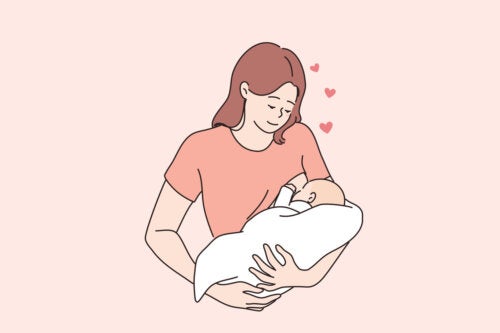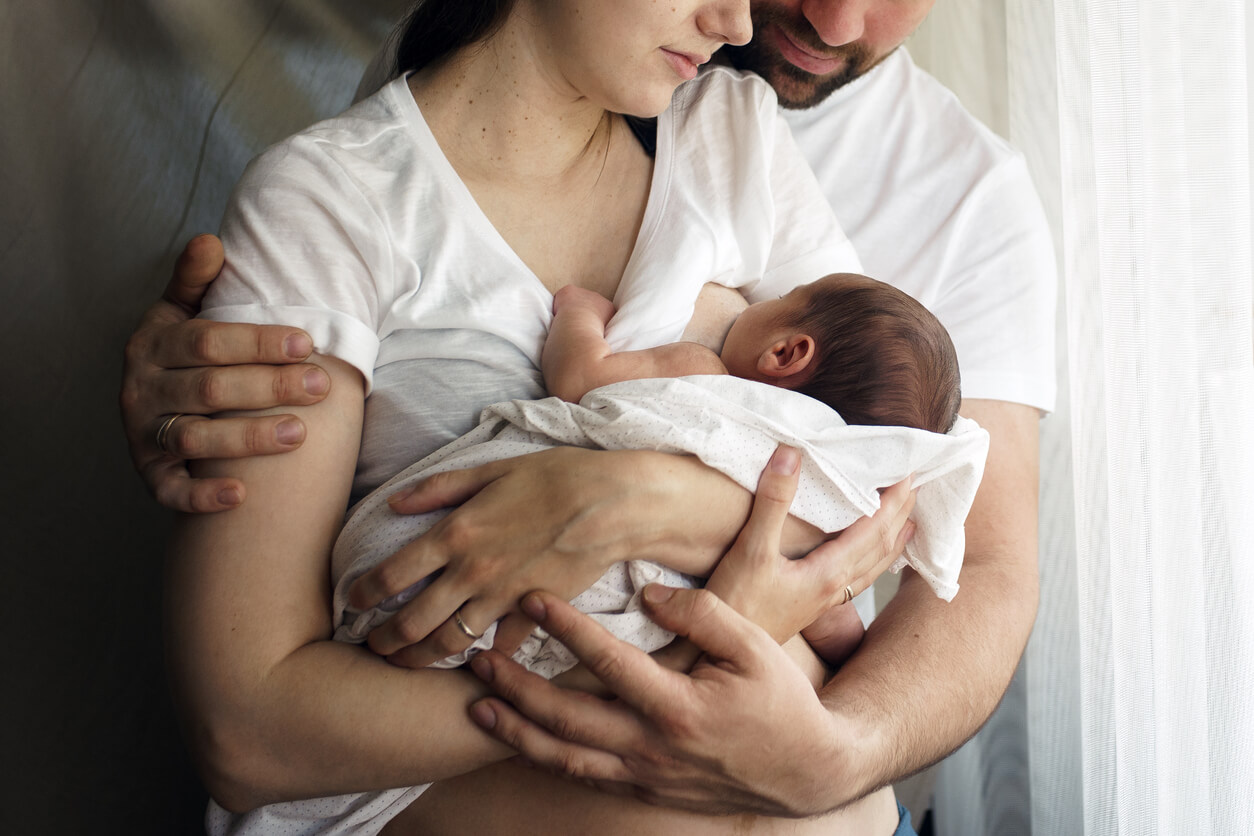Everything You Need to Know About Breastfeeding Before Giving Birth
Knowing the basics about breastfeeding before giving birth is crucial. Here's everything you need to know to be well prepared for the big day.

There’s no doubt that breastmilk is the best food for your baby. However, it’s a process that, although natural, produces concerns and some fear in mothers during their pregnancy. How often should I breastfeed? Will I be able to do it? Will it hurt? These are the main doubts that pregnant women have about breastfeeding before giving birth. That’s why we’ll clarify some frequent questions and key issues below. Don’t miss it!
What you need to know about breastfeeding before giving birth
Breastfeeding or formula feeding?
There’s no food more perfect for a baby than breastmilk. Mother’s milk contains the appropriate composition of fats, carbohydrates, proteins, vitamins, and minerals for each stage of the baby’s growth. It should be exclusive until 6 months, that is, without adding water or other foods, such as formula milk, infusions, or juices.
On the other hand, there’s formula milk, whose base is cow’s milk but with modifications in its components to make it similar to breast milk. However, it’s not identical and lacks the biological components of the human mother’s milk.
The benefits of breastfeeding are incalculable, both for the health of the baby and the mother and even for the establishment of the emotional bond between the two. However, we shouldn’t overlook the fact that, in many cases, formula milk is a necessary option. Especially when the mother can’t breastfeed for some reason, such as an illness.
Will I be able to breastfeed?
This is the doubt that most pregnant women have and the answer is yes, all women have the capacity to breastfeed their children. Our whole body and our mammary glands are prepared from the beginning of pregnancy to guarantee the baby’s nourishment.
In the beginning, you must be constant in order for breastfeeding to take hold, and from here on, success will be easier to achieve.
That’s why it’s best not to pay attention to other people’s experiences. Many times, there’s not enough knowledge or support to achieve successful breastfeeding.

When should I start breastfeeding the baby?
You should start breastfeeding your baby from the first hour after birth. After delivery, skin-to-skin contact should be established as soon as possible. The baby should be encouraged to instinctively take the breast and start sucking rhythmically.
Above all, you should enjoy this magic hour with your baby on top of you. During this time, while the delivery is taking place, it’s likely that your little one will begin to crawl to your breast.
If the baby is delivered by cesarean section, you should immediately start breastfeeding after the operation. First of all, look for a breastfeeding position that’s comfortable and doesn’t cause abdominal pain.
The frequency of feedings in newborns
During the first week, this may vary from one baby to another, however, it’s best for breastfeeding to be established on demand (every time the baby needs it). However, when the milk comes in, which occurs between the second and fourth day, it’s normal for the baby to feed between 8 and 12 times a day.
Regarding the duration of each feeding, this aspect also varies according to each case. Feedings usually last from 15 to 45 minutes, while the baby gets used to sucking efficiently.
How to know if your baby’s hungry
You should evaluate if the child shows any of the following signs that suggest hunger:
- Turns head to the side where it has contact with the mother
- Sticks out tongue
- Sucks lips
- Is uncomfortable when sleeping
- Makes noises
- Opens their eyes
- Puts their hands in their mouth
- Cries and doesn’t calm down or sobs
You must prevent the baby from crying out of hunger because when they become irritable, it’ll be more difficult to breastfeed. As soon as you notice any of the symptoms described above, offer the breast. With time, you’ll get used to these manifestations and you’ll know when to intervene.
How to know if your baby latches on correctly to the breast
The success of breastfeeding depends on a good breast latch. To do this, you need to direct your nipple towards the baby’s palate, so that it latches on completely and tightly to the areola.
Ideally, while you’re at the hospital or birthing center, the midwife or lactation consultant should check that everything’s going well with the position. And if it’s not, they can teach you the proper technique, which is one that doesn’t cause pain or discomfort. Remember that a bad latch causes pain and damage to the nipple, in addition to interfering with the newborn’s feeding.
Does breastfeeding hurt?
Breastfeeding shouldn’t cause pain. During the first few days of breastfeeding, you may feel some discomfort as the tissue experiences a new sensation. When the pain becomes moderate to severe or nipple cracking occurs, this is the product of poor latch-on and shouldn’t be considered a normal situation.
If this happens to you, discuss it as soon as possible with your lactation consultant to find the right solution and avoid early weaning.
What are the signs that indicate that your milk is sufficient?
The key to having enough milk and satisfying the baby’s demand is to breastfeed on demand because the more the baby sucks, the more food production there will be.
To know if the baby isn’t getting full, you can use the baby’s signs of hunger as your guide: If the baby is irritable, cries constantly, or demands the breast all the time.
Another way is to be guided by the number of diapers they soil during the day. Until the milk comes in, a baby can wet 1 or 2 diapers a day, but after the fifth day, they should wet between 6 and 8 diapers. As for stools, they usually soil one or two diapers a day, or even more.

When is it good to offer bottles or pacifiers?
When trying to establish breastfeeding in the newborn, it’s best not to offer bottles or pacifiers until it’s well established (around 3 to 4 weeks after birth). This guideline is based on the recommendations of the Breastfeeding Committee of the Spanish Pediatric Association.
There’s an explanation for this, and it’s that babies are sensitive to the differences between pacifiers and the mother’s nipple, so early use may make it difficult for them to learn to suck effectively. At this point, it’s important to get the opinion of your pediatrician or lactation consultant, who will tell you the pros and cons of its use in the first days after birth.
Learn about breastfeeding before giving birth
The subject of breastfeeding is quite extensive and therefore, it’s best to take advantage of the last months of pregnancy to clarify your concerns with the midwife or lactation specialist.
It’s important to make a list of questions and dispel any doubts with a professional. This way, you’ll know everything you need to know about breastfeeding before giving birth and you’ll be prepared when the time comes to hold your little one in your arms.
Above all, keep in mind that the act of breastfeeding is something natural and instinctive, so it will probably be easier than you think.
